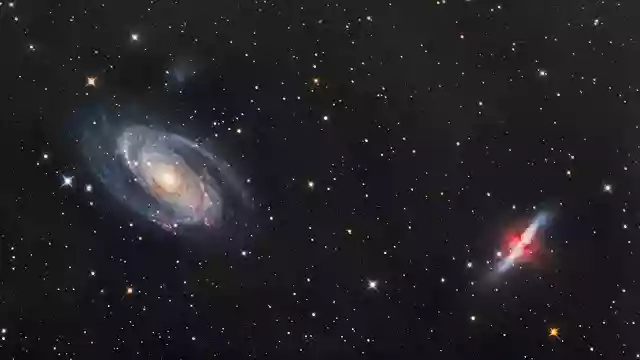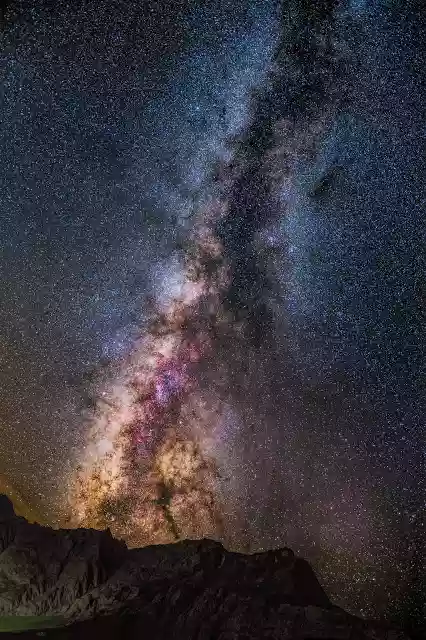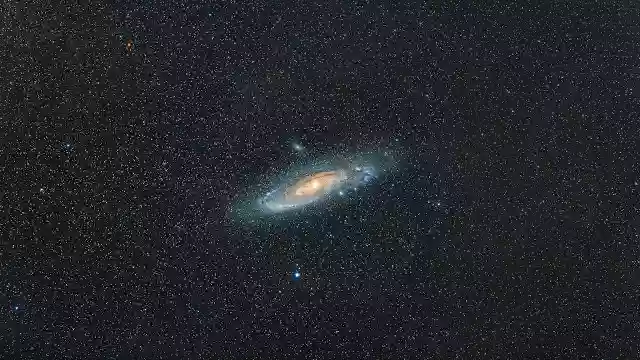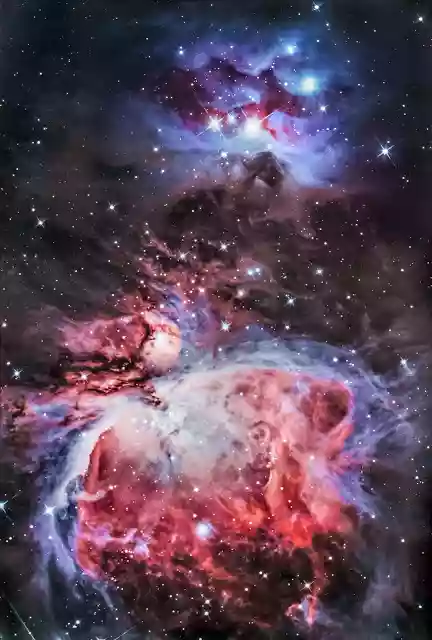- Call us: 01444 237070
- Contact Us
- Stores
- Sign In / Register
-
- Back
- Used Cameras
- Used Accessories
- Used Lenses
- Used Video
- Used Film Equipment
- Used Stock Alert
- Used Blank Test
- Sell or Part Exchange
- Used Clearance
- Recently Added Used Equipment
- Park Picks
- All Used Black Friday Deals
- Faulty
- Trade-In
- Blog
- New in
- Call us
- Contact us
- Stores
- Sign in
- Categories
- Tips & Inspiration
- Reviews
- News
- Events
- Features
- Buying Guides
- Competitions
Quick Start Guide to Astrophotography
With BBC Stargazing 2017 in full swing, we've brought in our resident astrophotography expert, Thomas Bridle, to give you some tips and tricks on how to get started photographing the wonders of the skies.
Tom has years of experience photographing celestial objects in the night sky and knows the pleasure of capturing that ultimate astro shot after a cold, cold night in a field or up the side of a mountain.
It's easy to think you can just pop into your back garden, point your camera towards the sky, take a shot and instantly be the next Patrick Moore, and in some cases you can, but really Astrophotography takes a bit more preparation than that.
Here are a few things to consider to help you get started.

Go Somewhere Dark
One of the biggest obstacles to getting a clear photo of the night sky is light pollution from street lights, cities and other built-up areas. This light pollution interferes with and overpowers the light from the dark night sky and makes your image murky and cloudy.
The simple solution to this is to head somewhere as far away from bright lights as possible - head into the country side, up hills or mountains, or anywhere where there's very little artificial light around.
There are few areas in the UK that are designated as 'Dark Sky' areas. These are places where you can get as far away from the bright city lights and avoid that light pollution as possible. Although, anywhere where you can see more stars with the naked eye than you can in a town/city centre will improve your chances of getting a great astrophotography shot.
Shoot South
In the UK, one of the most interesting parts of the Milky Way, and the easiest to photograph, is nearly always South of us.
So wherever you're shooting, make sure that to the South of you has the least amount of light pollution possible.
Additionally, it's always worth shooting through the Zenith. The Zenith is the part of the sky directly above you, wherever you are, anywhere in the world. It's the part of the sky with the least amount of atmosphere to look through and therefore the part which will be least affected by light pollution.

Use a Tripod
It's one of the most basic tools for low light or night time photography; a tripod is absolutely essential for astrophotography because you will be doing long exposures of the dark sky.
Most tripods will be up to the job for getting you started, but the heavier and sturdier one you can use - the better.
Shoot on Manual Mode
Although sensor size does have an influence on the quality of images you can produce, it's just as possible to get started in Astrophotography with an APS-C sized sensor as with a full-frame sensor.
However, whether you're shooting with a DSLR, a mirrorless camera, or any other camera - it must have a manual mode.
Shooting on manual mode is essential to astrophotography as you need to be able to control shutter speed, ISO and aperture.
Use a Wide Lens
For advanced astrophotography, shooting deep space nebulas & galaxies, you'll need a long telephoto lens (and a lot of other equipment), but for getting started shooting the Milky Way and other parts of the night sky, a wide angle lens is best.
Ideally aim for something that's 24mm or wider (35mm full frame equivalent) and with a fast aperture of at least f/3.5 or wider.
Find out what lens is best for your camera with our Camera Lenses Explained guide.
Used a Remote Trigger or Shutter Delay
As with any long exposure or low light photography, any shake from the camera or tripod can ruin your shot.
So alongside a sturdy tripod to support your camera, you'll need a remote shutter release, either in the form of a remote or a shutter release cable.
Alternatively, if you don't have a remote release, you can use the 10 second shutter delay timer on your camera to allow your camera to stabilise before the shot is taken.

Don't Expose for Too Long
Unless you're deliberately going for star trails - in which case you'll need a really long exposure - for the best and sharpest astro photographs you'll need as short an exposure time as you can get away with.
This is because the Earth moves pretty fast - 15 degrees per hour in fact! So anything longer than 10-15 seconds will result in star trails - blurring and smudged stars across the sky.
There is a rule to finding the right shutter speed, but it does vary depending on the resolution of your camera so make sure you do test shoots first.
The rule is: divide 500 by the true focal length of the lens you are using. The answer is the maximum amount of seconds you can set your shutter speed to before you start getting star trails.
Remember that this isn't exact as higher megapixel cameras are more prone to star trails than lower megapixel cameras and will therefore require a shorter exposure, and wider lenses will increase your potential exposure duration, whilst longer lenses reduce it.
Focus on the Brightest Star
When shooting Astrophotography, remember that using autofocus won't work.
Set your camera to manual focus and, using the live view and on-screen zooming (not with the lens), pick out the brightest star that's towards the centre of your frame.
Focus on infinity and work backwards from there until it's in focus, don't go too far otherwise it'll be turn into a blurry blob again.
Additionally, make sure long exposure noise reduction is turned on, but standard noise reduction is turned off as this can sometimes mistake stars for noise!
Shoot using Auto White Balance as you can always adjust this in post-processing.
After you've taken each shot, remember to use your histogram to check your progress. A good exposure should be entirely peaking in the first third of the histogram.

Post Processing
Even if you don't do any post processing, using the tips above you should still come out with some pretty decent Jpeg images.
However, a bit of post processing will pull the best out of your images.
Firstly, colour correction is perhaps the most important point. Experiment with the white balance until you come up with a neutral coloured image.
In order to colour correct for light pollution you can bring down the oranges in the image, or use a graduated filter to help with this.
Other adjustments you make could include gently raising your exposure and increasing contrast, and be very subtle with noise reduction and sharpening - if you use it at all.
Remember not to aim for a perfectly black sky. The Sky is not black, so it will look unnatural and the increased contrast can create jaggedness to the stars which is unaesthetically pleasing.
Test, Experiment, Improve
These tips should help you get started with astrophotography and photographing the sky at night.
The best advice is to continue to test shoot, experiment, try things out, practice and if you do that, you will improve.
And most importantly, have fun!
The Park Cameras School of Photography will be running Astrophotography courses shortly, if you're interested in learning more, sign up to our newsletter and we'll keep you updated.
All images in this blog are credit of Thomas Bridle (https://www.facebook.com/Tombridlephoto) who works at Park Cameras in our Burgess Hill store.
Here is a list of our current Astrophotography blog posts with further reading for photographers who love shooting nights.
- How to photograph the supermoon - read this one soon to catch the April 2021 Pink Supermoon.
- Astronomy gear for Jupiter and Saturn - buying guide for which cameras and lenses will get the best results for our planets
- Capturing Lunar eclipse - it doesn’t happen often so be prepared for this amazing phenomenon
Share this post:
By Park Cameras on 24/03/2017

Trade in your old equipment
Fast and easy trade in service ensures your old gear is collected efficiently and you are paid quickly! It's very simple to trade in your unwanted photography gear. Just head over to our dedicated Sell or Part Exchange page, fill out the details, and we'll get back to you with an offer for your old gear. Take the cash, or put it towards the cost of your new gear. It's up to you! Find out more
sign up to the newsletter
Keep up to date on the latest photography news, events and offers. Sign up now
